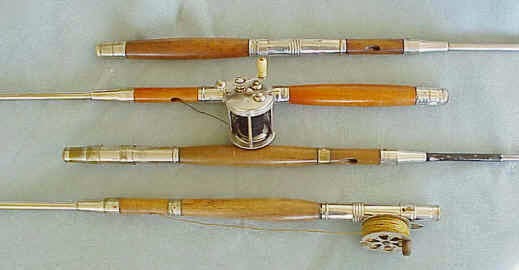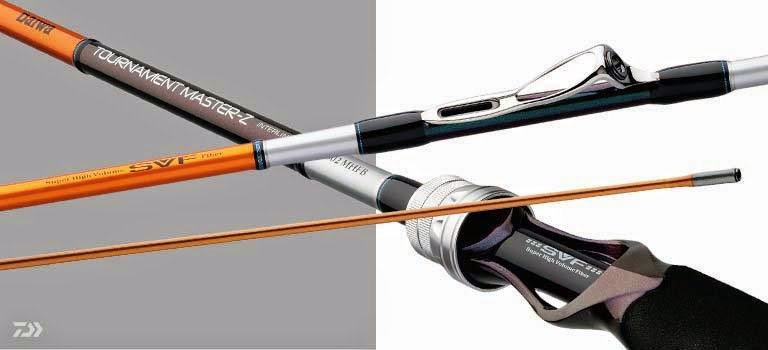I thought I knew the answer, but that was before I started my latest research mission on the Internet. Turns out I'm way off base.
Remember when Daiwa introduced Interline rods (as pictured right) in the mid-1990s? That's when I thought this "revolutionary concept" was born. After all, publicity of the day stressed these "no guides, no tangles, no stress" miracles as "the most advanced design ever."
Would you believe, though, that guideless rods actually date back to the 1880s? The "bread and butter" of the Horton Manufacturing Company at that time was their Bristol steel rods (pictured below). The company was named in honor of Everett Horton, the inventor of its first product. It seems Horton wanted to fish on Sunday, but the Puritanical village of Bristol, CT, didn't like Sunday slackers. He solved this dilemma with the easily carried (and hidden) telescopic steel rod.
Through the years, the Horton Manufacturing Company produced many varieties of steel rods. However, the one that still elicits the most interest among collectors is the offspring of Everett's original design--the rod with the line running through it, instead of through outside-mounted guides.
These rods were manufactured in bait-rod and fly-rod versions, and in many different lengths and designs. Although Horton dreamed up his idea in the 1880s, these rods still were popular enough to be listed in catalogs as late as the 1930s. They often were described as "a wonderful rod to poke through a hole in the brush to snag wary small-stream trout, because the line couldn't catch on branches."
According to my research, rod engineers at Daiwa Australia and Daiwa Japan have been working together in recent years to design the most technically advanced rods ever seen--the Tournament Master Z Interlines. These rods utilize the incredible SVF (super high volume fibre) carbon, combining precise resin control with unidirectional graphite fibre, to make one of the lightest, strongest and most sensitive blanks ever developed. Uniting SVF with the famous Linear Interline design, the new "Super Interline" introduces "Hyper Dry" technology--a super water-repellent dry polymer delivering the smoothest casts ever seen.
The Tournament Master Z Interlines (as seen at right) come in six different models (four spinning and two baitcast), all of which are only available in two pieces. The spinning rods come in ultra light, light, medium light, and medium heavy action, while the baitcast rods are available in medium heavy and medium actions.
So what do anglers have to say about these Daiwa Interline rods? According to a fella who used one during a two-day bass-fishing trip, "Everything Daiwa says about them in their advertising seems to be true. My first cast went 6 feet into the mono backing on my spinning reel (first time this ever has happened), and I had to put more line on to compensate (for the improved casting distance)... . Before anyone asks, 'No, I don't work for Daiwa. In fact, my entire closet is Shimano.'"
Here's what another angler had to say: "Was able to use my new Team Daiwa X Interline rod and my new Team Daiwa TDS reel yesterday, and it was awesome. I was able to cast a weightless wacky worm into the wind like it was a 1/2-oz. Rattle Trap... . Most sensitive rod I ever have used... ."
Not everyone shared those positive views, though. As yet another angler noted, "I got two of those rods but hated having to mess around with the little wire to string them up, and they just didn't cast for me worth a darn. I gave away both of them."
And then there was one final angler who referred to the Interline rod as "Daiwa's answer to the Edsel." He added this comment: "In this case, I think it's a different mousetrap and not necessarily a better one."
To be honest with everyone, I personally haven't gone looking for any of these rods since I first saw and handled some of them back in the late-1990s. For that matter, I don't have a clue how readily available they are in the U.S.--if at all. I get the impression you'll find plenty of them in Australia and Japan but not so much anywhere else.
I certainly don't see them as "the coolest, funkiest and sexiest most technically advanced rods available," which is how one Daiwa piece of advertising referred to them.




No comments:
Post a Comment